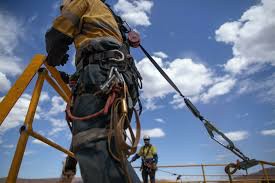


 349,500 Offered Certificates
349,500 Offered Certificates
 24/7 Online Training
24/7 Online Training
 Money Back Guarantee
Money Back Guarantee
 Fully Accredited Courses
Fully Accredited Courses

Created at: 22-02-2025 16:45
When it comes to Working at Heights, the margin for error can be alarmingly slim. With millions of workers around the world engaging in tasks that require them to elevate above ground level, the need for safety is paramount. However, one aspect that is often underestimated is the role of effective communication. Clear instructions, seamless teamwork, and efficient emergency signaling can dramatically reduce the likelihood of accidents and injuries in high-risk work environments.
At the foundation of any successful safety program is the principle of clarity. In environments where workers are exposed to potential fall hazards, what may seem like minor miscommunications can lead to catastrophic outcomes. Here are some of the ways clear instructions impact Working at Heights safety:
In high-risk tasks, individuals don't operate in isolation. Teamwork is the glue that holds safety efforts together. Here’s how effective teamwork promotes safety when working at heights:
In any workplace where heights are involved, preparing for emergencies is non-negotiable. An efficient communication system for emergency signaling can make all the difference. Here’s what to consider:
Understanding the tangible benefits of effective communication can be made clearer through real-world examples. In a case study from a construction site in Dublin, a team that underwent a comprehensive Working at Heights Training program implemented structured pre-task meetings and clear hand signals, which drastically reduced their incident rate by nearly 40% over a year.
In another instance, a company in Galway, after adopting two-way radios for all site workers, reported faster response times during emergencies, incredibly improving their overall safety record.
Incorporating effective communication into daily practices is crucial for improving safety. Here are some industry best practices:
While Working at Heights presents unique challenges, addressing the communication aspect can significantly enhance safety. Investing in comprehensive Working at Heights Certification can equip your team with not only essential safety skills but also the tools needed for effective communication. Prioritizing clear instructions, teamwork, and emergency readiness will ultimately foster a culture of safety that benefits everyone in the workplace.
Are you ready to invest in communication-focused safety training? Explore our Working at Heights Course Online today or reach out to us at [email protected] for more information!